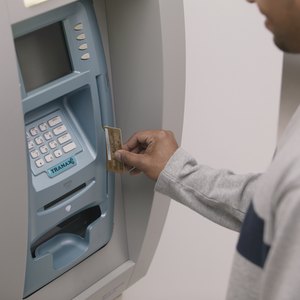
Companies or individuals may file for bankruptcy protection when they become insolvent. Banks that are unable to meet their obligations to their depositors are referred to as failed banks. Banks that are chartered by the federal government, as well as most state chartered banks, are insured by the Federal Deposit Insurance Corporation (FDIC). The FDIC closes the bank in the event of a bank failure, acts as the insurer of all insured deposits, and acts as receiver for the bank's assets and liabilities.
History of the Modern American Banking System
The stock market crash that began on October 29, 1929 is typically credited with being the beginning of the Great Depression. More than 700 U.S. banks failed within a year of the stock market crash, and more than 9,000 banks would fail during the 1930s.
Millions of Americans lost their savings and confidence in the banking system was destroyed. Congress passed the Banking Act of 1935, which established the FDIC in order to help restore consumer confidence in the nation's banking system.
Read More: How Does the Banking Act of 1935 Affect Us Today?
Function of the FDIC
The FDIC is an independent agency of the federal government. It works to identify, monitor and address risks to insured deposits in order to minimize detrimental effects on the economy in the event of a bank failure. The FDIC is most well known for providing deposit insurance for up to $250,000 per depositor, per bank.
Read More: Can I Deposit a Million Dollars in a Bank?
Seizure and Transfer of a Failed Bank
When a bank is no longer viable – that is, when its reserves fall below the statutory amount, or there are significant problems with the bank's management – the state or federal agency that chartered the bank revokes that charter. It takes this action in close coordination with the FDIC, which usually finds another bank to assume the failed bank's assets and liabilities. For instance, another bank may look at the bank assets and liabilities list for the failed bank and decide to take it on.
The failed bank generally learns of the charter revocation at the end of business on a Friday afternoon, when dozens of FDIC agents arrive at the bank and its branches to seize its assets and liabilities and transfer them the acquiring bank.
Liquidation of a Failed Bank
Banking institutions generally cannot file for bankruptcy protection. If no other bank will agree to acquire the failed bank's assets and liabilities, the FDIC will liquidate the bank.
An example of a bank asset is cash as well as its lending portfolio. In this case, services to account holders may be disrupted during the liquidation process – ATM cards will not work and checks presented for payment will be returned to the payee marked "Bank Closed." The FDIC will issue each depositor a check for the value of their account(s), to a maximum of $250,000 per depositor. Assets like loans receivable are sold to other institutions.
Read More: Bankruptcy vs. Default
Notification to the Public
The FDIC utilizes public forums such as the local news media, posted notices and town meetings to notify the public when a bank fails. The FDIC also attempts to notify each of the bank's depositors in writing by mail as soon as the bank is closed.
Notifications are sent to the most current address available from bank records. This notification is mailed immediately after the bank closes. In most cases, the branches of the failed bank open for business as usual the following Monday, under the ownership of the acquiring bank.
If a Bank Goes Bust, What Happens to my Money?
The FDIC facilitates the acquisition of a failed bank by another bank whenever practical. The acquiring bank is also required to notify depositors by mail when a failed bank is acquired. This typically occurs along with the first bank statement following the acquisition. The transition usually causes no disruption of service, and the only change noticed by depositors is the name on their bank.
Significance of FDIC Oversight
The FDIC is responsible for insuring trillions of dollars in deposits. Virtually every bank in the United States has their deposits insured by the FDIC. The FDIC notes that since its inception on January 1, 1934, no depositor has lost money on any insured deposit as result of a bank failure.
References
Writer Bio
Mike Parker is a full-time writer, publisher and independent businessman. His background includes a career as an investments broker with such NYSE member firms as Edward Jones & Company, AG Edwards & Sons and Dean Witter. He helped launch DiscoverCard as one of the company's first merchant sales reps.

